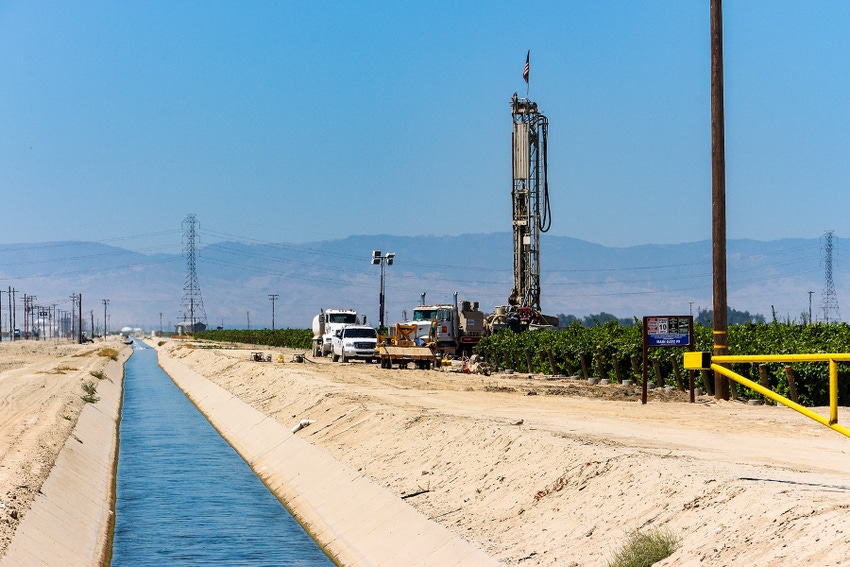
Following successive years of extreme drought for many Golden State farmers, a snowy winter, a wet spring and a fair supply of irrigation water as summer approaches makes it feel a lot like Christmas in June.
“This year has been a very wet year in California with well over average snowpack and above average precipitation in many areas,” reports Dr. Doug Parker, Director of the California Institute for Water Resources. “We have pretty good irrigation allocations in the state, some areas are getting 100 percent water (allocation) and others around 65 or so percent, and many of those are areas really that never get 100 percent, so it is a good water year so far.”
The Institute is one of 54 national organizations charged with coordinating water resource and conservation research to address the nation’s growing water needs. Parker’s mission is to work with academic communities across the Golden State as well as with local, state and federal agencies in coordination, collaboration, and engagement on research and planning efforts designed to address California’s growing water issues.
Compared to recent years, when it comes to water for agricultural production, 2019 so far is offering some marked improvement for many of the state’s farmers and ranchers.
“Consecutive years of severe drought that California endured in recent years were difficult for agricultural producers and the snow and rain in the early months of this year is offering the chance to start the spring growing season with a better moisture profile than many have seen in some time,” Parker noted.
While the wet year will benefit most who are engaged in crop and livestock production, tree nut, fruit and vegetable producers will be among those that could benefit the most.
Parker says the greatest benefit for the wet year so far may be that state and federal projects have improved allocations of water this year. Also of benefit is groundwater levels that have recovered, slower in some areas than others, and less groundwater pumping will be required as a result of higher reservoir levels.
While rain levels varied greatly across the state, Parker said many areas have received normal (average) rainfall amounts in contrast to much smaller accumulation rates of recent years. Winter and spring snowpack, however, registered as much as 166 percent above annual average after successive years of snowpack shortfalls.
By comparison, California has received more rain and snow this year than any recent year in memory.
Have rain and snow levels finally returned?
Parker says while we would like to believe we are returning to the days when California rain and snowfall averages were normal more years than not, there is little or no indication that is the case.
According to the National Oceanic and Atmospheric Administration (NOAA), when it comes to climate and weather in general, there are many contributing events like upper level and surface winds, also called air masses, ocean temperatures, repetitive global oscillation variations and other parts of the global steering mechanism that helps beneficial weather to develop.
NOAA researchers say they can look at climate change, or global warming for example, and understand a great deal about what drives conditions one way or another over an extended period. But the elements that contribute to the steering mechanisms of weather events can change over the course of days or hours, making it impossible to know with certainty what will happen next month or next year.
“We’ll never be in a place where we can coast or just relax on water issues,” Parker added. “When it comes to California particularly, we have a water paradox. Essentially we have more acres suitable for agricultural irrigation than we will ever have enough water to develop.”
He should know. Parker co-authored a 2015 report, California’s Water Paradox: Why Enough Will Never Be Enough,” that chronicles the catch-22 of water availability versus need within the Golden State.
“Rarely do proponents of (water) solutions seem to fully appreciate the complexity of California’s water situation,” the report reads. “Over time, we have consistently increased supplies while reducing demands to support a growing population and higher levels of agricultural commodity production.”
Co-authored by Faith Kearns, Academic Coordinator, California Institute for Water Resources, University of California, Division of Agriculture and Natural Resources, the report indicates that efforts to increase supply of water or reduce demand for water will ultimately lead to more agricultural lands being brought into production, more water available for cities to grow, and more water to remain in streams to ensure a healthy environment.
By example, the report compares the paradox to the need for more freeways in urban areas.
“When it comes to freeways, congestion leads to demand for more lanes to be built. More lanes temporarily reduce congestion and lead to increased housing construction, and over time, that increased housing construction leads to more congestion. That, in turn, leads to demand for more freeways with more lanes.”
Parker says such a water paradox doesn’t mean “we should throw our hands into the air and do nothing.” Augmenting our water supplies, introducing better conservation measures and better managing our resources is a never-ending battle “we cannot afford to lose.”
Parker says developing new and better ways to augment water supplies and conserving our resources is our best hope of staying ahead or not far behind the curve of the water paradox. And finding exceptionally good years when rain and snow combine to bring some desperate relief from years of drought is like finding an unexpected winning lottery ticket. It is nothing we can depend upon, but something we should enjoy and appreciate when it happens.
Our best hope, he suggests, is that this good year for water will get a little better before it gets worse.
For more news on tree nuts as reported by growers and farm advisors, subscribe to the Tree Nut Farm Press e-newsletter.
About the Author(s)
You May Also Like






